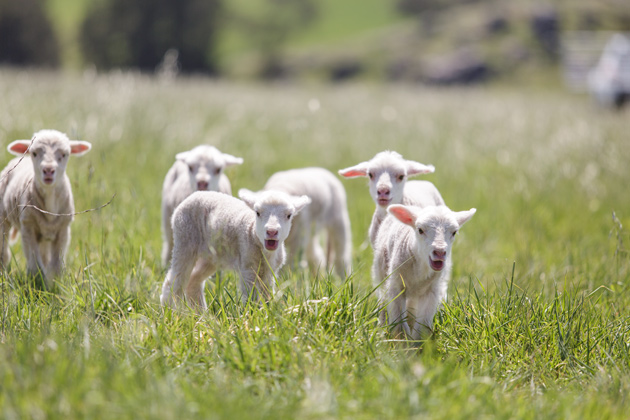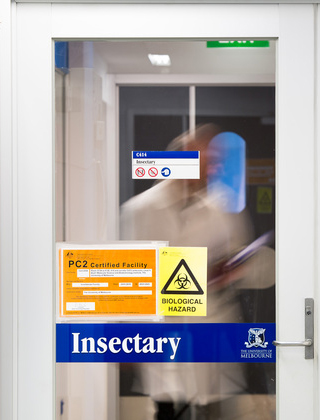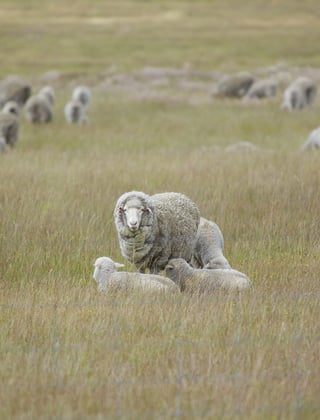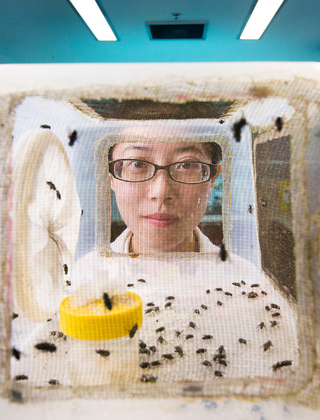Analgesia and Anaesthesia

Options for alleviating pain associated with surgical husbandry practices.
The development of effective and practical anaesthetic and analgesic treatments for lambs has been a critical advance in alleviating the pain and distress lambs experience associated with husbandry procedures such as mulesing, tail docking and castration.
Globally, Australian Merino woolgrowers have been leaders in the adoption of pain relief for husbandry procedures. Tri-Solfen®, a local anaesthetic, was registered in 2007, whilst the Non Steroidal Anti-Inflammatory Drugs (NSAIDs) Metacam® and Buccalgesic® were registered in 2016 and 2017 respectively. Numnuts, a handheld device that delivers a local anaesthetic for ring castration and tail docking by rings, was launched in 2019.
On-farm adoption of these analgesic and anaesthetic options has been rapid.
- A 2014 survey, on 2011 practices, (2014 Benchmarking Australian Sheep Parasite Control by UNE) reported 64% of respondents used pain relief when mulesing wether lambs and 59% for ewe lambs
- The 2017 Merino Husbandry Practices Survey of 1,200 woolgrowers reported that by 2017 84% of woolgrowers who mules Merino wether lambs provided analgesics and/or anaesthetics, whilst 83% provided analgesics and/or anaesthetics for their Merino ewe lambs.
- In a smaller national online survey of 354 producers (2018 Benchmarking Australian Sheep Parasite Control), undertaken by the UNE of Australian sheep producers, more than 90% of respondents that mules said they use pain relief (analgesics and/or anaesthetics) when mulesing their wether lambs, while 87% reported using pain relief with their ewe lambs.
The 2017 Merino Husbandry Practices Survey also reported that nationally 42% of woolgrowers castrated and/or docked their lambs with analgesics and/or anaesthetics. Analgesic and/or anaesthetic options for ring castration and/or ring tail docking have only been available since 2016 and woolgrower adoption of these options will continue to be monitored over the coming years.
What analgesics and anaesthetics are available for pain relief at marking?
There are currently four products available for sheep for alleviating pain from mulesing, tail docking and/or castration, specific to the different techniques.
Fast acting but short lasting local anaesthetics block pain so sensory function of the area is lost. The two local anaesthetic products available for use at lamb marking are Tri-Solfen® and NumOcaine®. Tri-Solfen® is a topical pain relief and antiseptic solution that contains:
- Two local anaesthetics, for immediate and longer lasting pain relief
- Adrenaline, to reduce blood supply to the area, reducing blood loss and prolonging the effect of the anaesthesia.
- An antiseptic, reducing the risk of infection to the open wound.
Tri-Solfen®, available for use since 2007, is applied as a gel spray directly onto the open wound and provides immediate (within one minute) pain relief that lasts up to 24 hours. It also works to seal and protect the wound, reducing the risk of infection and assisting with healing.
NumOcaine® (delivered via the Numnuts® device) is an injected local anaesthetic developed specifically for ring castration and tail docking with rings. It provides immediate pain relief, reaching maximum intensity 15-35 minutes after application. Numnuts® is a handheld tool that includes an easy-to-use banding tool providing fast ring application, plus an operator-safe two-stage injection mechanism that ensures the correct dose of local anaesthestic is dispensed to the right location. The patented technology is scientifically proven to reduce tail docking and castration pain by up to 68%.
Two slow acting but longer lasting analgesic products are registered for use in sheep in Australia: Buccalgesic® and Metacam20®, they contain the same active, meloxicam which is a non-steroidal anti-inflammatory drug (NSAID).
Products with meloxicam alleviate pain and inflammation and reduce fever and fluid production caused by tissue damage. These are slower-acting than local anaesthetics, can be injected or applied orally, and provides longer-lasting pain relief for over 24 hours. When it comes to lamb marking these products can be used for mulesing, surgical castration, hot or cold knife tail docking, ring castration and ring tail docking. The combination of both Tri-Solfen® or NumOcaine® with a meloxicam product provides the most effective pain relief and gives the lamb the best chance of recovering faster, addressing both the immediate pain and distress and any pain that might occur during the healing process, as well as reducing the possibility of infection.
Summary of available analgesics and anaesthetics, Aug 2020
|
Action |
Application |
WHP |
Mulesing |
Tail docking with knife/hot knife |
Castration with knife |
Tail docking with rings |
Castration with rings |
| Short acting local anaesthetic e.g. Tri-Solfen® | Fan spray application to the wound (effective in less than 1 min) | 90 days |
✓ |
✓ |
✓ |
× |
× |
| Short acting local anaesthetic e.g. Num0caine® | Injection with Numnuts® device (effective in less than 1 min) | 0 days |
× |
× |
× |
✓ |
✓ |
| Longer-acting analgesic e.g., Buccalgesic® and BUTEC OTM® | Oral with custom applicator - gel applied inside the cheeck (effective for 15 mins) | 10 days |
✓ |
✓ |
✓ |
✓ |
✓ |
| Longer-acting analgesic injectable meloxicam, e.g. Metacam® 20 | Subcutaneous injection high on neck (effective for 10 mins) | 11 days |
✓ |
✓ |
✓ |
✓ |
✓ |
The welfare of lambs is underpinned by the Australian Animal Welfare Standards and Guidelines for Sheep. These Standards and Guidelines are the legal requirements for the welfare of sheep. They have been endorsed by all States.
MORE INFORMATION ON ANALGESIA AND ANAESTHESIA
- The latest in research reports, publications and industry news on analgesia and anaesthesia
- Factsheet – Anaesthetics and Analgesics at Lamb Marking
- Training Guide - Plan, Prepare and Conduct Best Practice for Sheep Husbandry Procedures, Mar 2020 - This training guide describes best-practice management and techniques at lamb marking (which includes tail docking, castration and vaccination) and mulesing. It is designed to assist woolgrowers and their contractors perform these procedures with the utmost care and attention, to ensure the best short term and long term welfare outcomes for the animal.















